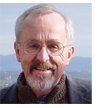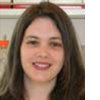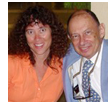Uncovering Math in Everyday Life
 How does math relate to my life? Why should I care? I’m not going to grow up to be a mathematician. My textbook only gives me more of what my teacher said in class. All math, all the time. Where does it apply? I can spend my time better on other things. How does math relate to my life? Why should I care? I’m not going to grow up to be a mathematician. My textbook only gives me more of what my teacher said in class. All math, all the time. Where does it apply? I can spend my time better on other things.
Well, perhaps no student has said all of these things at one time. But certainly many feel this way. The situation is complicated by the fact that mathematicians often do not know of applications of their theory, nor do they care. If they are the textbook authors, then the in-class teacher gets scant book support for motivating students with math applications. Read more.
She Revolutionized Biology, without ever Knowing
 The first human cells to ever grow and divide in the lab were taken without consent in 1951 from a 31-year-old African American woman named Henrietta Lacks, who died shortly thereafter from cervical cancer. The cells were named “HeLa cells” after her, and they continue to be the most commonly used human cells in biology labs world-wide. These cells have been sold over the past 60 years for indescribable amounts of money, and have had more scientific publications written about them than any other cells. Read more. The first human cells to ever grow and divide in the lab were taken without consent in 1951 from a 31-year-old African American woman named Henrietta Lacks, who died shortly thereafter from cervical cancer. The cells were named “HeLa cells” after her, and they continue to be the most commonly used human cells in biology labs world-wide. These cells have been sold over the past 60 years for indescribable amounts of money, and have had more scientific publications written about them than any other cells. Read more. |
 |
The Vermont Mathematics Initiative: Building a Cadre of Deeply Knowledgeable Mathematics Teacher Leaders
 Begun in 1999, the Vermont Mathematics Initiative (VMI) represents a collaboration of the University of Vermont, the Vermont Agency of Education and Vermont School Districts. The mission of the VMI is to support highly effective mathematics instruction across the entire state of Vermont so that children can learn the rigorous mathematics needed for success in higher education and the workplace. The VMI is founded on the principle that strong mathematics content knowledge of teachers is prerequisite to enhanced pedagogy and higher student achievement. Read more. Begun in 1999, the Vermont Mathematics Initiative (VMI) represents a collaboration of the University of Vermont, the Vermont Agency of Education and Vermont School Districts. The mission of the VMI is to support highly effective mathematics instruction across the entire state of Vermont so that children can learn the rigorous mathematics needed for success in higher education and the workplace. The VMI is founded on the principle that strong mathematics content knowledge of teachers is prerequisite to enhanced pedagogy and higher student achievement. Read more.
Science Thursday and La Belle
 I mentioned in my last column that I was developing an adaptation of the density activity for November’s Science Thursday. The La Belle: The Ship That Changed History exhibit opened at the Bullock Texas State History Museum with a Members-only night that more than 1400 attended. Archeologists and other experts have begun the process of reassembling the ship timber by timber in the gallery. When the reconstruction is complete, the hull will be moved a few yards to become the centerpiece of a completely revamped first floor. Read more. I mentioned in my last column that I was developing an adaptation of the density activity for November’s Science Thursday. The La Belle: The Ship That Changed History exhibit opened at the Bullock Texas State History Museum with a Members-only night that more than 1400 attended. Archeologists and other experts have begun the process of reassembling the ship timber by timber in the gallery. When the reconstruction is complete, the hull will be moved a few yards to become the centerpiece of a completely revamped first floor. Read more. |